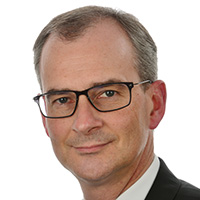Session 6: Lift and the City: How Elevators Change and Reinvent the Shape of Cities

Markus Jetter
Head of Research & Innovation Center Rottweil
thyssenkrupp, Stuttgart
“50 Forward, 50 Back”, the conference theme for 2019, reminds us that we live in the middle of the most dramatic change in human history, as far as population and urbanization are concerned. In 1969, rural inhabitants accounted for about 70 percent of the global population. By 2069, urban population will account for more than the same percentage. With half of the world’s population already living in cities, we are in the midst of the most significant demographic shift in modern history.
Based on projections of average household sizes and increases in city populations, an estimated 250 million additional housing units will be required by 2030 across the 12 countries that account for 61 percent of the global population. Current urbanization trends require us to find solutions that allow us to live comfortably while accommodating this increasing population density. This means that cities must more effectively use the space they have. The rising density of urban areas requires the development of more mid- to high-rise buildings, which allow for the most environmentally friendly and cost-effective usage of space. Tall buildings occupy less ground space, which is essential to securing green areas for the city, and allowing for the centralized and intelligent control of energy.
Tall buildings are becoming more like vertical cities, providing office, residential and commercial space. Just like any other place in a city, every location within a building needs to be well connected if it wants to attract commercial investors, tenants, or even casual shoppers. To achieve this level of connectivity, buildings need future flexible transport systems similar to a metro.
